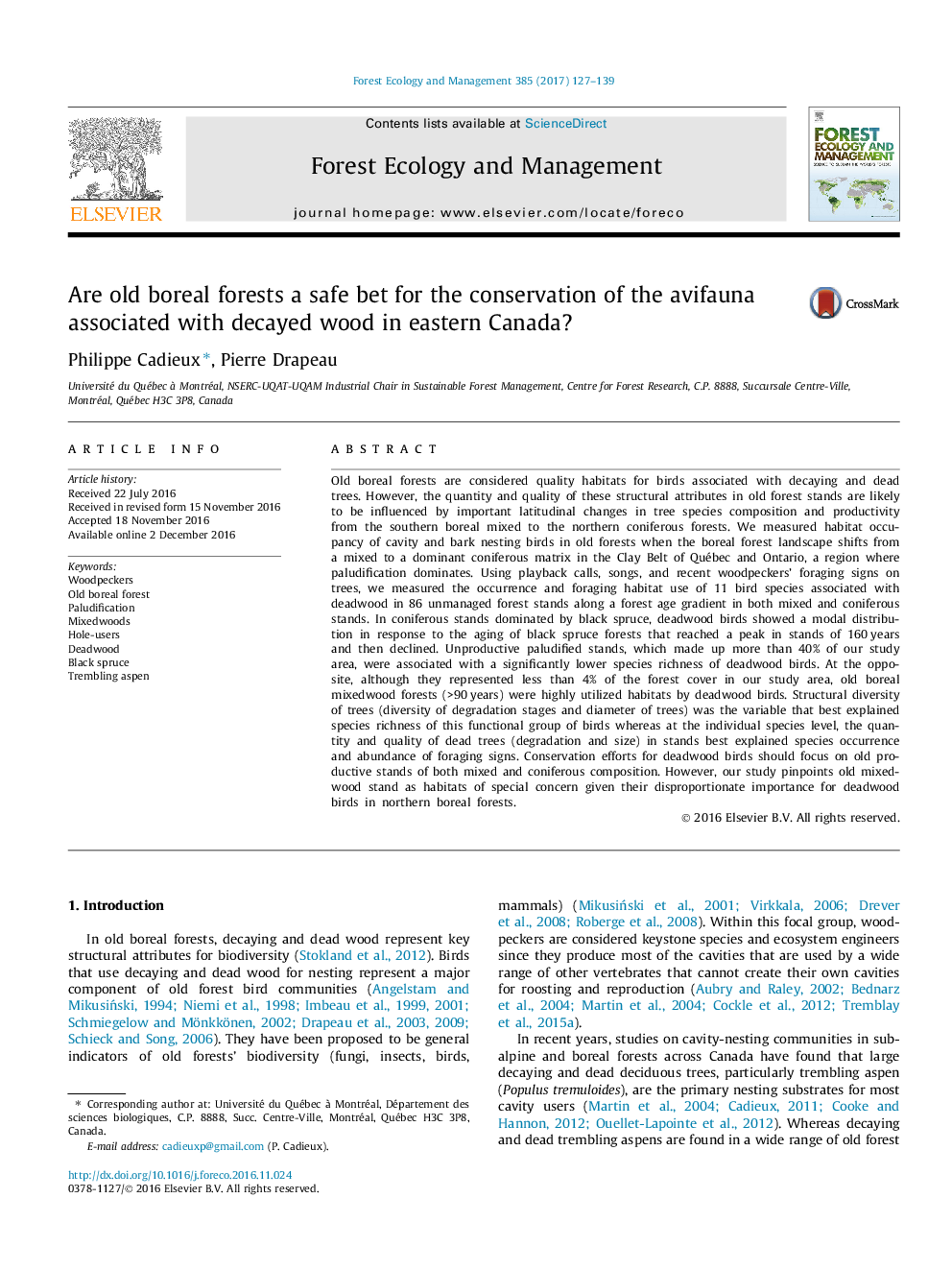| کد مقاله | کد نشریه | سال انتشار | مقاله انگلیسی | نسخه تمام متن |
|---|---|---|---|---|
| 4759572 | 1421373 | 2017 | 13 صفحه PDF | دانلود رایگان |
عنوان انگلیسی مقاله ISI
Are old boreal forests a safe bet for the conservation of the avifauna associated with decayed wood in eastern Canada?
ترجمه فارسی عنوان
آیا جنگلهای ساحلی قدیم یک شرط امن برای حفاظت از جنگل های دریایی با چوب فرسوده در شرق کانادا هستند؟
دانلود مقاله + سفارش ترجمه
دانلود مقاله ISI انگلیسی
رایگان برای ایرانیان
کلمات کلیدی
موضوعات مرتبط
علوم زیستی و بیوفناوری
علوم کشاورزی و بیولوژیک
بوم شناسی، تکامل، رفتار و سامانه شناسی
چکیده انگلیسی
Old boreal forests are considered quality habitats for birds associated with decaying and dead trees. However, the quantity and quality of these structural attributes in old forest stands are likely to be influenced by important latitudinal changes in tree species composition and productivity from the southern boreal mixed to the northern coniferous forests. We measured habitat occupancy of cavity and bark nesting birds in old forests when the boreal forest landscape shifts from a mixed to a dominant coniferous matrix in the Clay Belt of Québec and Ontario, a region where paludification dominates. Using playback calls, songs, and recent woodpeckers' foraging signs on trees, we measured the occurrence and foraging habitat use of 11 bird species associated with deadwood in 86 unmanaged forest stands along a forest age gradient in both mixed and coniferous stands. In coniferous stands dominated by black spruce, deadwood birds showed a modal distribution in response to the aging of black spruce forests that reached a peak in stands of 160Â years and then declined. Unproductive paludified stands, which made up more than 40% of our study area, were associated with a significantly lower species richness of deadwood birds. At the opposite, although they represented less than 4% of the forest cover in our study area, old boreal mixedwood forests (>90Â years) were highly utilized habitats by deadwood birds. Structural diversity of trees (diversity of degradation stages and diameter of trees) was the variable that best explained species richness of this functional group of birds whereas at the individual species level, the quantity and quality of dead trees (degradation and size) in stands best explained species occurrence and abundance of foraging signs. Conservation efforts for deadwood birds should focus on old productive stands of both mixed and coniferous composition. However, our study pinpoints old mixedwood stand as habitats of special concern given their disproportionate importance for deadwood birds in northern boreal forests.
ناشر
Database: Elsevier - ScienceDirect (ساینس دایرکت)
Journal: Forest Ecology and Management - Volume 385, 1 February 2017, Pages 127-139
Journal: Forest Ecology and Management - Volume 385, 1 February 2017, Pages 127-139
نویسندگان
Philippe Cadieux, Pierre Drapeau,
